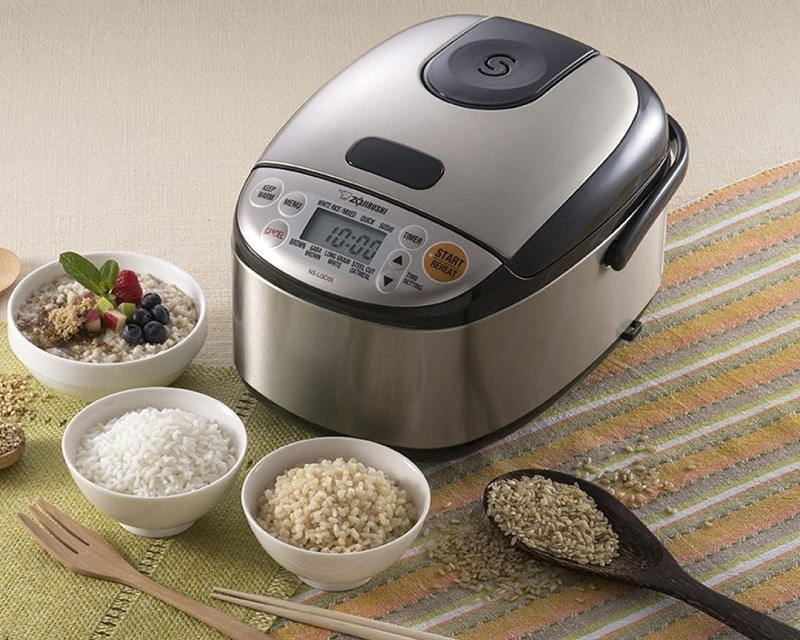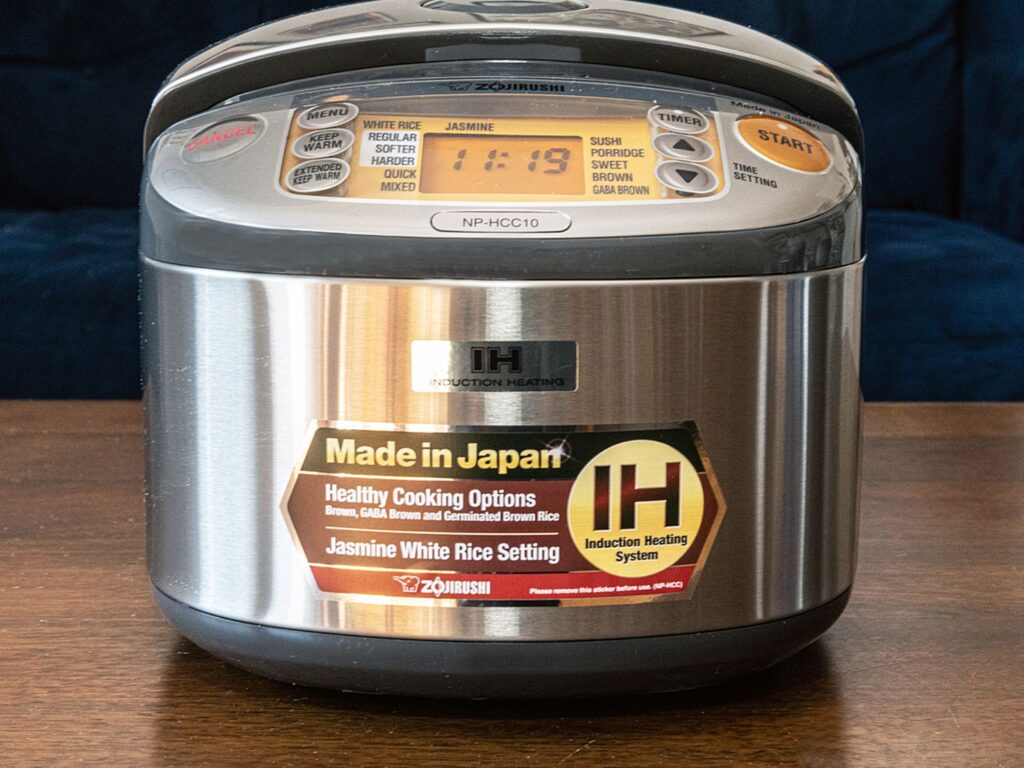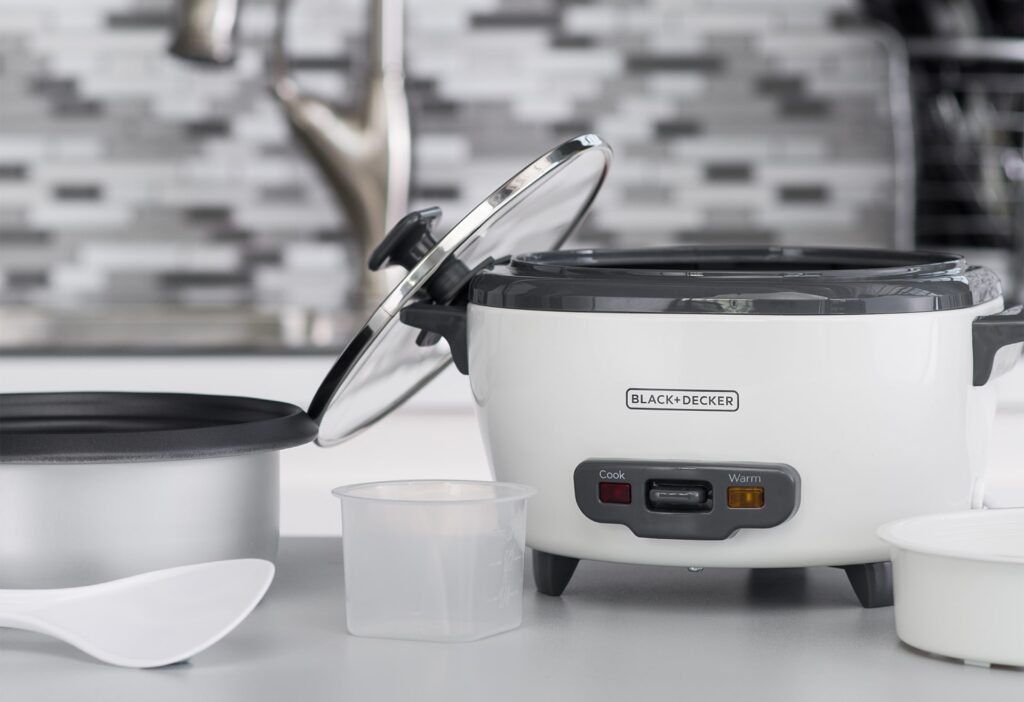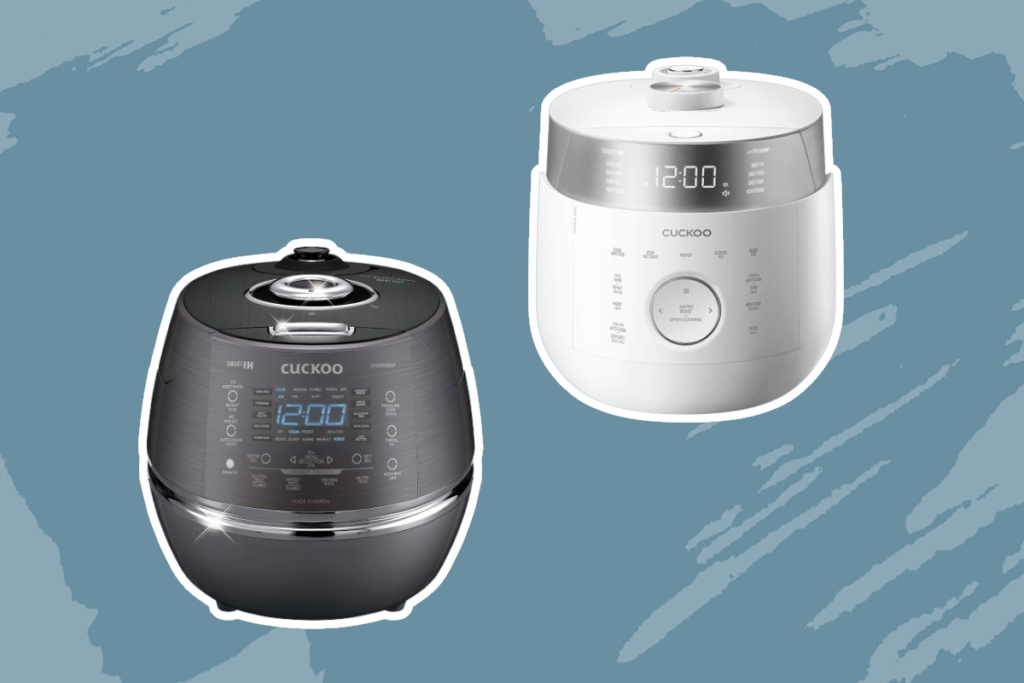From the cave dwellers hunting to inventing fire to burn meat, humanity has gradually developed new skills on how to cook better, faster, and more efficiently. This passion and determination on the part of humanity throw us into the raging instant pot vs rice cooker battle that has penetrated the contemporary culinary world. What are their quirks? What are their weaknesses?
Since the 1950s, at the time of the inception of rice cookers, rice has become a globally received delicacy in homes. Although it is yet to penetrate the homes of western civilization completely, it is eaten by almost half the world’s population. In 2019, Instant Pot appeared in the cooking appliances world and quickly gathered a cult following. The popularity of both culinary hardware is the reason for this article. This article explores the limits of these two cooking appliances: Instant Pot and rice cooker. We look at their pros and cons, their various types, and how to cook rice with them because rice is arguably the most popular food grain in the world.
Instant pots are an upgraded version of electric pressure cookers. They are multi-cookers, having a pressure cooker, slow cooker, steamer, saute machine, and warmer functions in one package. It is digitized to make you switch from mode to mode and is very easy to use. As anyone can suspect, with the introduction of Instant Pot Duo and Instant Pot Duo Plus, Instant Pots were successfully shot to the frontiers of versatile cooking products.
According to Instant Pots’ official website, A team of professionals in 2009 embarked on a journey to solve a problem they faced, busyness. Dr. Robert Wang, the founder of the establishment that created Instant Pots, revealed that their main goal is to make Instant Pots ” the best kitchen experience by offering unsurpassed user interfaces and connected technologies.”
The Instant Pot team professionals were trying to create a device that prepares the best meals in a short time; this line of products is made for busy people. So, for anyone who intends to save time and at the same time get the best out of a meal, Instant Pot is an ideal choice.
Apart from busy people, health-conscious individuals, food enthusiasts who like to get their hands dirty, and people with a restricted dietary lifestyle will find Instant Pot to be a magical device cast for their pain points.
The mechanism of Instant Pots is largely based on the principle of pressure i.e., Gay-Lussac’s Law.
Instant Pots generally have three parts, the inner pot, the lid cover, and the safety valves.
The inner pot is a removable cooking pot. It is made of stainless steel for uniform heating. The lid cover is used to seal the cover of the Pot.
Physics teaches us that boiling point is the temperature of the water, where the vapor pressure is equal to the atmospheric pressure. To break things down, water needs to be heated to the point that the pressure it produces is the same as the ones around it.
The float valve, if unpinned, will allow the pressure vapor to escape. Warning, do not open the locked lid of Instant Pots while cooking. Wait for it to depressurize for about 10-15 minutes before opening. Opening the lid at that time will cause an explosion due to the forced release of high-pressure gas. One can only imagine how deadly that can be.
Instant Pots also have sensors and microprocessors to detect and control the heating cycles in the cooker.
Based on a PDF file uploaded on the Instant Pot’s official website, there are five types of Instant Pots. We cannot go into details here, but here are a few things to note about each of them.
There are higher modes for tech-savvies and food enthusiasts who want to test the limits of their engineering and culinary skills.
As aforementioned, Instant Pots have many cooking modes, one of which is the grain/rice cooking mode. The rice mode makes cooking rice super easy and can be very helpful, as we will see. Here are the steps on how to cook rice with Instant foods.
Measuring rice is not as different from how you measure rice for other cookware. Simply use what you usually use to measure, and take the appropriate amount you want to room with. After that, rinse the water.
The amount of water you add to cook rice in Instant Pots is integral to getting the best out of the rice. Make sure you don’t use too much water to cook the rice. Many people believe it is a great way of getting rid of the arsenic in rice, so they use a rice-to-water ratio of 1:6,1:8 or 1:10 for cooking.
This procedure eliminates arsenic but gets rid of other nutrients alongside arsenic. Rinsing with hot water is enough to reduce the amount of arsenic in the rice. So, to avoid having mushy rice, simply use a ratio of 1:1 for white rice and 1:½ for brown rice. Shut the lid of the cooker and ensure that it is locked. Seal the release valve and turn on the cooker.
Depending on the kind of Instant Pot you are using, there may be settings for different kinds of rice. Most devices will set the default as white. Make sure you check and correct the settings depending on the rice you are cooking at that moment. The settings will give the device directives on how to cook the specific rice. When it is done, your Instant Pot will automatically turn off, and then you’re ready to go. Bon Appetit!
Maximizing time is a huge plus for any cooking appliance, and Instant Pots do not disappoint. Instant pots can cook slow-cooking foods like tough meats and complicated recipes in half or a quarter of the time. What’s great about it is that you still get top quality.
Cooking with Instant Pots guarantees that all heat energy expelled during cooking is utilized to the utmost. The lid ensures no heat leaves the Pot and is well insulated for heat to escape. Maximum efficiency of energy guaranteed.
Instant Pots are easy to clean and last long because of their stainless steel feature. All you need to do after cooking is to wipe the interiors with water and soap. No complicated washing technique or specialized dishwashing soap is needed.
The smartness of Instant Pots makes them stand out from regular culinary wares. You can simply set your food to cook and leave it to do other things. The computerized features will surely reduce the anxiety of burning food.
With the features, they come up with, it is only natural to think they will be expensive. Their multipurpose design makes it possible to replace your cookware with them, but it is not easy for an average pocket to cough up $200 without hesitating.
Simple neglect of warning can cause drastic consequences when it comes to Instant Pots. The explosion of highly compressed pressure causes burning, scalding, and eventually scarring of the skin. Trauma is not far behind due to the impact of the force. Skin injuries can contact infections, and the scars and burns can lead to emotional issues like nightmares and depression.
As the name implies, rice cookers are cooking appliances specialized for cooking rice. Although they are used in cooking rice, it doesn’t restrict them from cooking other delicacies conveniently as slow cookers.
Before the invention of rice cookers, rice was cooked in a “Kamado,” a huge oven usually placed at the edge of the kitchen in Japan. They were very dangerous because cooking rice with a kamado requires knowing how to control the fire it produces. A rhyme, “Hajime choro, naka pappa, butsu iu koro greetings o hiite,” trained cooks to gradually start from low-intensity to high-intensity of fire until the Pot starts to bubble.
It may be surprising to readers that electric cookers have existed since the beginning of the 20th Century. Electric rice cookers started during the Taisho time (1912-1926). Still, it was not until 1955 that the first programmed family rice cooker made by Toshiba corporations appeared on a special in Japan. By 1960, rice cookers that could keep food warm after it was cooked appeared; in 1979, manufacturers produced automated rice cookers.
Any rice lover will admit that rice cookers are a dream come true in their lives. Rice is a meal eaten in different cultures – from the basmati rice in India to the sticky-type rice in Japan, spiced with various vegetables and assortments, and the Nigerian Jollof rice. The wide variety of people who eat rice shows that rice cookers are ideal for everyone worldwide.
So, if you’re a rice enthusiast or your culture adores rice, rice cookers are for you.
Also, if you’re the busy kind that would want to enjoy rice but would prefer not to go through the stress of actively preparing it, automated rice cookers are available for you.
If you’re wondering how rice cookers work, here’s a brief overview of their mechanism.
Rice cookers have a removable bowl within them that you can use to pick up your rice. The bowl is then placed within the cooker and comes in contact with the thermostat for good thermal contact. The heater of the cooker heats the water: rice mixture at about boiling point. Unlike Instant Pots, it doesn’t go beyond the boiling point. If the temperature goes beyond the boiling point, the thermostat switches off, or more advanced rice cookers indicate a warning or switch to low-power mode, cooking at 65 degrees Celsius.
The primary parts of a rice cooker are:
Want to know more? Here’s a detailed explanation we made about how rice cookers work.
Usually, rice cookers are divided into two main types; electric rice cookers and gas rice cookers. For the sake of this article, we would be restricting ourselves to electric cookers.
Electric cookers are of various types. Here are some of them.
Cooking accurately with rice cookers will ensure that your rice is accurately prepared without fail. All you do is add the expected rice-to-water ratio of 1:2 into the rice cooker bowl and press start.
Rice cookers have a regulator to keep them from over or under-cooking. Everything will be in order by the time you go back. If you took too long, you would find warm rice waiting for you.
You may be perplexed with the decision to cook rice in an Instant Pot vs. a rice cooker. If you don’t have a budget, you can buy the two. But if you have a budget you are working with, here are a few comparisons between the two.
Rice cookers are safer than Instant Pots. The pressure produced by Instant pots poses a great risk. Regardless, instant pots have safety measures to protect from accidents that may occur.
When it comes to durability, Instant Pots win the round. Its body is very strong and can survive a fall compared to rice cookers.
Due to their high temperature and pressure mechanisms, Instant pots can cook rice more quickly than a rice cooker. Rice cookers, though, can cook rice more accurately.
Both are easy to use. However, Instant Pots require a learning curve, while rice cookers come with detailed instructions on preparing different cuisines.
We can say that there is a draw between Instant Pot vs. rice cooker. They are both easy to maintain and do not need any technical know-how or specialized washing soaps.
When it comes to versatility, Instant Pots have a wider variety of things they can do. It can be a steamer, slow cooker, baker, yogurt maker, and many more. Instant Pots take the win without a fight.
Instant Pots are more expensive than rice cookers. They cost $200, and the cheaper ones are around $100. Some of the best commercial rice cookers can be purchased for as high as $600. If you’re interested in rice cookers for your business, we’ve got you covered. We have a review of some of the best commercial rice cookers in the market you can buy.
Good food is one of the best things to have as a person. An even better deal is good, healthy food with no stress while sparing ample time. This is the miracle of technology today in the area of culinary wares.
Technology has developed over the years to give instant pots vs. rice cookers for us to choose from. Instant Pot is a great cooking ware for people who don’t have to do the work of cooking meals with complex procedures. They are easy to maintain and highly versatile. Rice cookers are affordable and can make the best rice. They are also very easy to operate. Whatever you choose when you get to the store, you know that you’re getting a really good bargain for your happiness in cooking.





